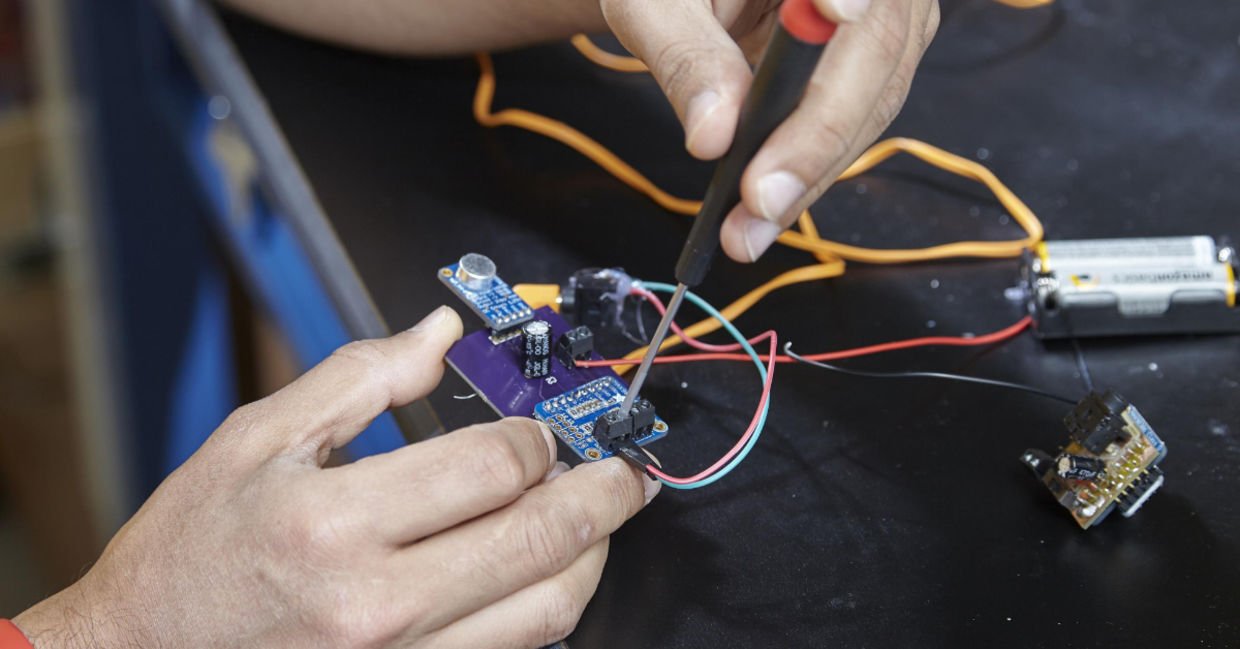
(Craig Bromley / Georgia Tech)
Hearing plays a major role in every person’s life because it is the sense through which people enjoy music, perceive the sounds of nature, and are able to listen to the voice of loved ones. Hearing is an invaluable function and its loss as people age can make a big difference in the quality of peoples’ lives. Now, an amazing affordable new device can help restore hearing for a fraction of the cost of a typical hearing aid.
According to the World Health Organization (WHO) around 466 million people worldwide, over 5 percent of the world’s population, have disabling hearing loss, and people over 65 years of age represent no less than one third of that faction. What is more, the majority of people affected live in low and middle-income countries, making no surprise the fact that only 17 percent of those who might benefit from using a hearing aid, actually use one. That’s because conventional hearing aids tend to be highly-priced, until now.
The new hearing aid device was created by scientists from the School of Chemical and Biomolecular Engineering at Georgia Institute of Technology in Atlanta. The research, published in the National Library of Medicine about the device called LoCHAid shows that it can be easily manufactured and repaired. This makes it incredibly accessible to most people. According to a news release from Georgia Tech, the new device can be built with a dollar’s worth of open-source parts and a 3D-printed case.
Ultra-low-cost hearing aid could help address age-related hearing loss worldwide https://t.co/IbQNfhNGhN pic.twitter.com/PvkSzYEM1y
— GA Tech Research (@GTResearchNews) September 23, 2020
The new device can deal with mild to moderate age-related hearing loss, diminishing the cost limitations of conventional hearing aids and other sound amplification devices. The research team built their device using electronic filters for the frequencies that are lost to age and this was a less expensive method.
“Taking a standard such as linear gain response and shaping it using filters dramatically reduces the cost and the effort required for programming,” said Soham Sinha, the study’s first author in the news release. Sincha, born in India, has been a long-time user of hearing aid technology.
“I was born with hearing loss and didn’t get hearing aids until I was in high school,” said Sinha. “This project represented for me an opportunity to learn what I could do to help others who may be in the same situation as me but not have the resources to obtain hearing aids.”
But this device will do more than just restore hearing for seniors; restoring the ability to communicate with other people will have a large impact on reducing feelings of frustration, loneliness and isolation.
Research from the University of Melbourne in Australia also shows that hearing loss can also be associated with cognitive decline in older adults. In fact, the risk of developing dementia for people with mild hearing loss almost doubles that of a person with normal hearing. Not to mention the risk for people with a severe hearing loss, which is almost five times higher.
So even though this is still in the trial stage, initial results suggest that the use of hearing aid could delay cognitive decline by significantly diminishing communication issues, depression, and loneliness. This treatment for hearing impairment, could become the answer to meaningfully improve the quality of life of many older adults.
YOU MIGHT ALSO LIKE:
Scientists Found Proteins that Could Restore 'Irreversible' Hearing Loss
17-Year-Old’s Clear Face Masks Help the Hearing Impaired Community
Sign Language Yoga Studio Empowers People Who are Hearing Impaired







